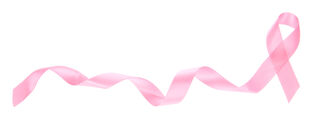Health
The Pink Ribbon Predicament
Breast cancer as a brand can be problematic.
Posted October 28, 2021 Reviewed by Michelle Quirk
Key points
- The pink ribbon campaign has been successful for increasing awareness of breast cancer, but its use for marketing can be harmful.
- It's important to research before purchasing pink ribbon products to ensure your money is going where you intend it.
- The experience of breast cancer survivors is diverse and challenging and it's important not to minimize or idealize it.

October is winding down, and in my part of the world, that means the air is growing cooler, days are getting shorter, and trees are shedding their brightly colored leaves in earnest. It also means that Breast Cancer Awareness month is coming to a close.
Whether you have personal experience with breast cancer or not, these days it is hard not to notice the explosion of pink that fills store aisles this time of year.
Breast cancer awareness campaigns have laudable goals: to increase awareness of the rates of breast cancer in service of increased screening rates to improve early detection, to raise funds for breast cancer research, and to promote camaraderie among breast cancer survivors. These campaigns have been successful in many ways, with improved rates of mammography over the past 30 years and the pink ribbon now a highly recognized symbol of breast cancer support.
However, an unintended downside of the successful pink ribbon campaign has been the co-opted use of this symbol by businesses for marketing purposes. “Pinkwashing” is the term used to describe a business or organization that uses the pink ribbon to promote a product while also manufacturing or selling products that are linked to cancer. The term is also used more broadly to describe the use of this symbol by companies eager to imply that their sales financially support breast cancer research, when little to none of the proceeds are actually donated for this purpose.
Pinkwashing in either sense is problematic for a number of reasons. First, it diverts funds that may have otherwise gone to organizations that are working to make an impact on this disease. It is easy to see a product with a pink ribbon symbol and purchase it thinking you are supporting breast cancer, while it may be that those funds aren’t going to any organization that supports patients or research. With so many different business and products claiming to support breast cancer, it can be a challenge to know where your dollars are going. This has become such a common practice that in 2020 the Better Business Bureau issued guidance around this, encouraging caution before buying pink ribbon products to ensure your money is going where you intend it.
In addition, pinkwashing minimizes the experience of breast cancer survivors by reducing it to a positive, simplified narrative to prioritize sales. Breast Cancer Action, an organization that advocates for women at risk for and living with breast cancer, coined the term pinkwashing. The organization's former director, Karuna Jaggar, succinctly outlined this problem: “[The] pink ribbon has come to be about selling products. To sell a product, a company needs to sell the disease. To sell the disease, they use upbeat messages about fighting, being positive, and staying strong.”
While this messaging may be helpful for some, it risks oversimplifying what is a varied and often physically and psychologically taxing experience. This oversimplification idealizes and softens what for many represents some of the most significant suffering they have ever undergone. Furthermore, it sets an expectation for breast cancer patients that is impossible to meet: I have yet to talk to a breast cancer survivor who has felt strong or positive throughout the entirety of their treatment. In contrast, I often witness people criticizing themselves for not being able to always stay positive, for needing to rely on others, and who feel anything but strong. It is difficult for many to set aside this criticism when they hear and see messages to the contrary every day.
The pink ribbon is likely here to stay, at least for the foreseeable future, but we can be more aware of the difference between what it claims to represent and what we actually hope to accomplish in providing support for breast cancer. Consider these possibilities for breaking out of the pink ribbon predicament:
Remember: Your story is your own!:
- You cannot be reduced to a ribbon or a color or a catchy phrase. Your story is so much more complex and so much bigger than that. You can embrace the pink ribbon and identify with it as a symbol of what you’ve been through, or you can hate it and throw any pink you receive in the garbage. You get to choose.
- There is no right way to feel about your or a loved one’s diagnosis or treatment. Everyone experiences their diagnosis and treatment differently, and all feelings in response are legitimate. It is normal to struggle.
Research before you buy:
- The "Think Before You Pink" campaign by the Breast Cancer Action group is a great resource for learning more about pinkwashing.
- If you’re going to buy pink products, research the company you are purchasing from. Do they donate any of the proceeds to breast cancer research? What organizations do they donate to? How do those organizations actually help? Organizations like guidestar.org or charitywatch.org review nonprofits based on how they use their funds and can help with this.
- Is the product you’re buying safe? Does it contain any materials that are known to be carcinogenic? Cancer.gov provides a list of known carcinogens that may affect health (see link below), and there are apps coming out (such as Think Dirty, EWG Healthy Living App) that allow you to crosscheck products for harmful ingredients.
- If you are purchasing a pink ribbon product for a loved one with breast cancer, consider carefully whether this is a gift they will appreciate – it’s OK to ask, and may be a great way to open conversation about how they’re coping.
References
Better Business Bureau. (2020). BBB wise giving tips: Breast Cancer Awareness Month 2020. https://www.bbb.org/article/news-releases/23177-bbb-wise-giving-tips-br…
National Cancer Institute. (2018). Cancer-causing substances in the environment. https://www.cancer.gov/about-cancer/causes-prevention/risk/substances
Breast Cancer Action. (2021). About Think Before You Pink. https://bcaction.org/about-think-before-you-pink/


